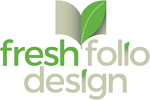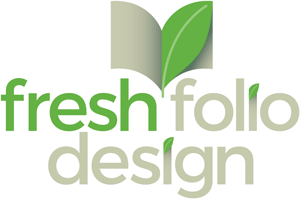One of the most daunting tasks for a designer can be the concept phase of a project. Feeling the weight of responsibility to find the big idea for a particular project can be overwhelming.
However, having a solid process to walk through helps to focus your energy and develop concepts that solve problems and satisfy clients. While we don’t believe there is only one way to concept, or that what we do is unlike other designers, we do understand it can be helpful for people to see how the process works.
Let’s look at some of the elements that make up our concepting process. Feel free to add or modify any of these steps to develop a process that works for you.
Funny You Should Ask
One misconception people have about how designers work is the belief that the concept phase starts with a designer and a blank computer screen (or pencil and paper if you’re really old school). While some may choose to start there, we believe that’s like showing up the day of a marathon and just hoping for the best.
Designers solve problems. But you can’t solve a problem until you truly understand the problems and determine the goals for a project. So the first step in concepting should be to ask questions… lots of questions.
We have a series of questions that we start with, however, that is usually just the beginning. Once we have the initial picture of the content and purpose of the brochure, we want to understand how it will be used and who the target audience is.
Of course, depending on the scope and size of a project, the amount of questions may vary. But every good process should start with questions, even if only a few are needed, to understand the problem you are solving.
A favorite question we have is “What are three words that describe what you want your audience to take away after seeing this brochure?”
You don’t want to gather only data, you also want descriptive words. By using less concrete descriptions of the goals, you can uncover details that may not be overtly said.
Put on your detective cap and probe as far as you can so that you have uncovered every bit of information you can; that will help when concepting.
Hunting and Gathering
Once you have an understanding of project goals and potential challenges, a helpful next step can be creating a mood board. The idea is to find different visuals (photos, colors, graphics) that are in line with the information gathered through your questions.
You aren’t trying to solve anything at this point, instead think of it more like hunting and gathering visuals that resonate with what you learned.
For example, the type of visuals that you would pull together for a brochure where the audience is medical doctors fresh out of school would be very different from the visuals gathered for a handout at a kid-focused, family-friendly event.
It’s important to know that you can’t get any of this wrong at this point. Of course you may pull visuals that ultimately don’t help with the direction you go, but don’t hinder yourself by thinking that’s a bad thing. Even deciding what isn’t a fit, can be just as helpful as finding what does.

This can also be a time to explore what the competition is doing. Unlike the research you gather from asking questions, seeing what other companies in the industry are doing will help to give a framework of what your audience has previously seen or may expect.
That doesn’t mean you need to do the same. Remember, the goal is not to pick pretty pictures and colors, you are walking through the process of solving a problem. For each decision that you make in your concept, you want to be able to reference back to data that you received that supports that decision.
It may be that mirroring what others in your industry are doing results in tired, worn-out approaches. Wouldn’t it be refreshing to have a designer identify that pattern and present solutions that break that mold?
Pull It Together
Now that you have been immersed in the subject and harvested visuals it’s time to start pulling together your ideas to create some initial designs. Some designers start in front of the computer, while other prefer to sketch out ideas on paper. It’s truly your preference. We’ve had jobs where the visuals from the mood board have sparked exciting ideas and we are raring to hop right on the computer.
 Other times it has helped to do some thumbnails and sketches to work out an idea further before getting digital. Our only recommendation is to find whichever feels right for you, and the particular project.
Other times it has helped to do some thumbnails and sketches to work out an idea further before getting digital. Our only recommendation is to find whichever feels right for you, and the particular project.
There should be certain themes that keep rising to the top; specific words and ideas central to the message of the brochure. Use those as your guide to start creating your design.
We usually begin with concepting the cover and one spread of a brochure. The cover usually introduces the audience to the visual concept, while the interior spread shows how that theme will be reflected throughout.
Starting with a cover and spread instead of thinking in terms of the entire piece can prevent a designer from feeling overwhelmed by larger brochures. Just remember, when selecting a spread to concept, choose one that contains content and elements that will be used throughout the piece. That allows the client to get a clearer picture of the concept application.
For example, if there are callouts or charts, you want to make sure you are working with similar content so you can reflect those solutions in the concept presentation. Of course for longer brochures, the style of the content may vary dramatically. In those cases you may decide it is best to do additional spreads to demonstrate how the design will work with a different style of content.
A Parting Gift
At this point we would start working with design elements like C.R.A.P. (contrast, repetition, alignment, & proximity) and creating hierarchy for each page. These are the moments that you get to shine as a designer. You’ve done the work and now you use your skills to create visual solutions.
We hope that looking at our concept process is helpful in finding the approach that works for you. To help remember the importance of process when designing we’d like to give you a free “What’s the Big Idea?” phone wallpaper.
Every time you see it we hope you remember the value of having a solid process which helps you to do your job with excellence and solve your clients problems.




Leave a Reply